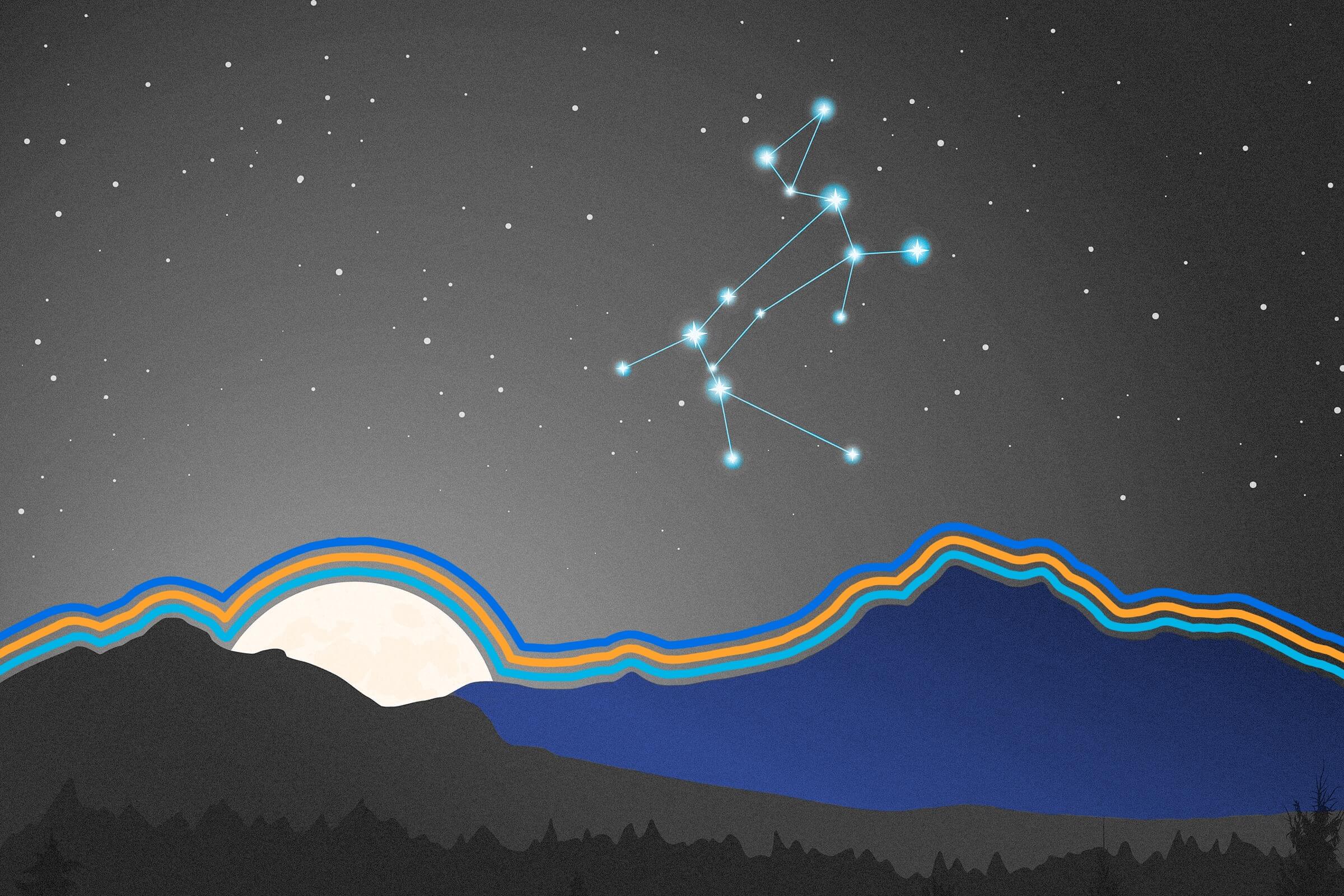
The “dog days of summer” are named after the star Sirius.
When things heat up around July and August, you’ll inevitably hear the phrase “dog days of summer.” No, this doesn’t have anything to do with canines lying around panting in the heat — instead, the phrase is a celestial reference. Sirius, the brightest star in the night sky, is nicknamed the “dog star” because it makes up the “eye” of the constellation Canis Major (Latin for “Greater Dog”). In Greek mythology, Canis Major is said to be a hunting dog who belongs to the legendary huntsman Orion. Cosmologically speaking, this relationship is fitting, because the three stars that make up the asterism Orion’s belt point to the “dog star” in the southern sky.
The phrase “dog days of summer” actually refers to a specific period on the calendar, from July 3 until August 11. The ancient Greeks and Romans believed these “dog days” occurred when Sirius appeared to rise with the sun, which always occurred during the summer. The idea was that the immense luminosity of Sirius along with the sun’s heat somehow created summer’s scorching temperatures. Of course, we now know this doesn’t make much sense. For one thing, Sirius is much farther away from Earth than the sun is — like 50 trillion miles farther — so the star has absolutely no effect on Earth’s climate. For another, the dog days of summer are relative to where you live on Earth, appearing earlier in the year for those living farther south and later for those in the north. Also, the position of Sirius is subject to Earth’s wobbly rotation — meaning that in 13,000 years, Sirius will instead rise in midwinter rather than midsummer. So no, “dog days of summer” isn’t an allusion to our cuddly canines, but a vestigial phrase derived from some 2,500-year-old astronomy.
Sirius has a long history in human culture; ancient Egyptians referenced the star in their mythology, and even built an entire calendar around it. But despite its long legacy, scientists are still discovering new things about the night sky’s most prominent star. Although you’ll often hear the name Sirius in the singular, Sirius is actually a binary system, meaning there are in fact two stars. In 1844, German astronomer Wilhelm Bessel discovered that Sirius’ course through the sky was ever-so-slightly wavy, suggesting that the star actually had a stellar companion and that they revolved around each other. Eighteen years later, astronomers in Massachusetts confirmed Bessel’s hunch. Today, Sirius is known in astronomy circles as Sirius A and Sirius B. The star you see with the naked eye is Sirius A, while Sirius B — the first white dwarf ever discovered — is comparably faint, nearly 10,000 times dimmer than its celestial companion. In fact, NASA couldn’t even begin to estimate the star’s mass until measurements were made by the Hubble Space Telescope in 2005 (turns out it’s about 98% as massive as our sun).

